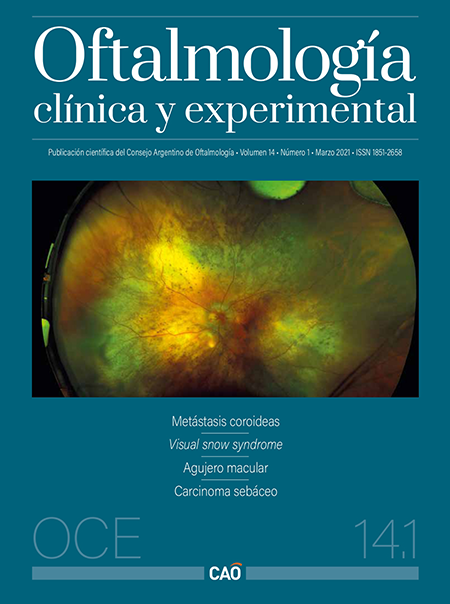Visual snow syndrome: what ophthalmologists should know
DOI:
https://doi.org/10.70313/2718.7446.v14.n1.41Keywords:
visual snow, visual snow syndrome, persistent visual phenomena, visual aura, migraine, entoptic phenomenaAbstract
Visual snow is a neurological visual condition that is currently poorly recognized, and therefore, underdiagnosed or misclassified. Ever since its first report in 1995, knowledge of this entity has been growing considerably and several authors have defined and redefined diagnostic criteria. However, even today, this visual phenomenon, its strong association with other signs and symptoms —visual snow syndrome (VSS)— and reported comorbidities are not fully known by the ophthalmologic community. Patients with visual snow have positive and permanent visual disturbances described by most of them as tiny flickering dots in the entire visual field that are generally continuous and may persist for years. Its high rate of association with neurologic symptoms such as migraine, tinnitus, palinopsia, entoptic phenomena, photophobia and nyctalopia makes its identification even more difficult, thereby opening a wide range of diagnostic possibilities, among which migraine visual aura and psychogenic psychiatric disorders, are the main challenge.
Published
How to Cite
Issue
Section
License
Copyright (c) 2021 Consejo Argentino de Oftalmología

This work is licensed under a Creative Commons Attribution-NonCommercial-NoDerivatives 4.0 International License.
Con esta licencia no se permite un uso comercial de la obra original, ni la generación de obras derivadas. Las licencias Creative Commons permiten a los autores compartir y liberar sus obras en forma legal y segura.







